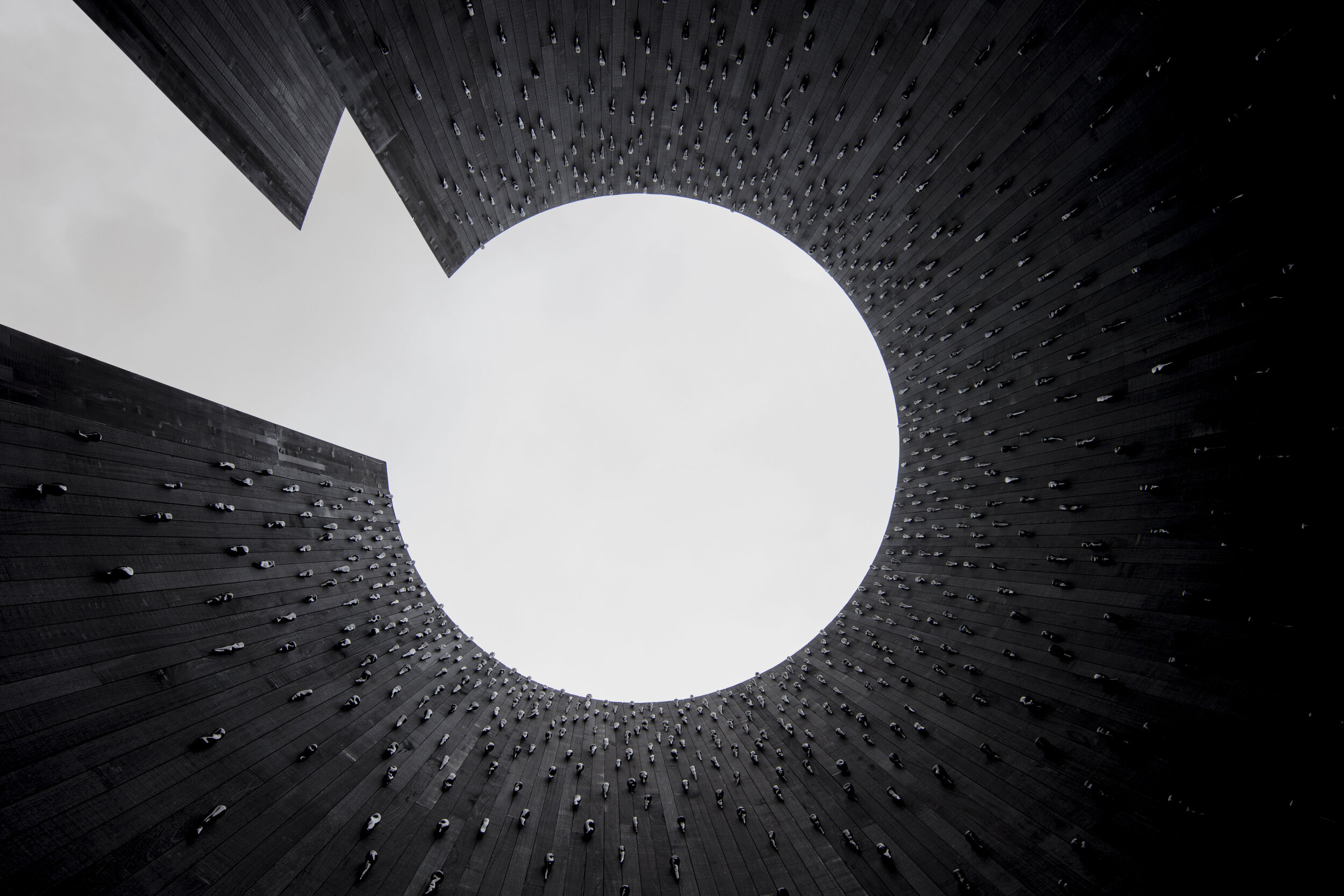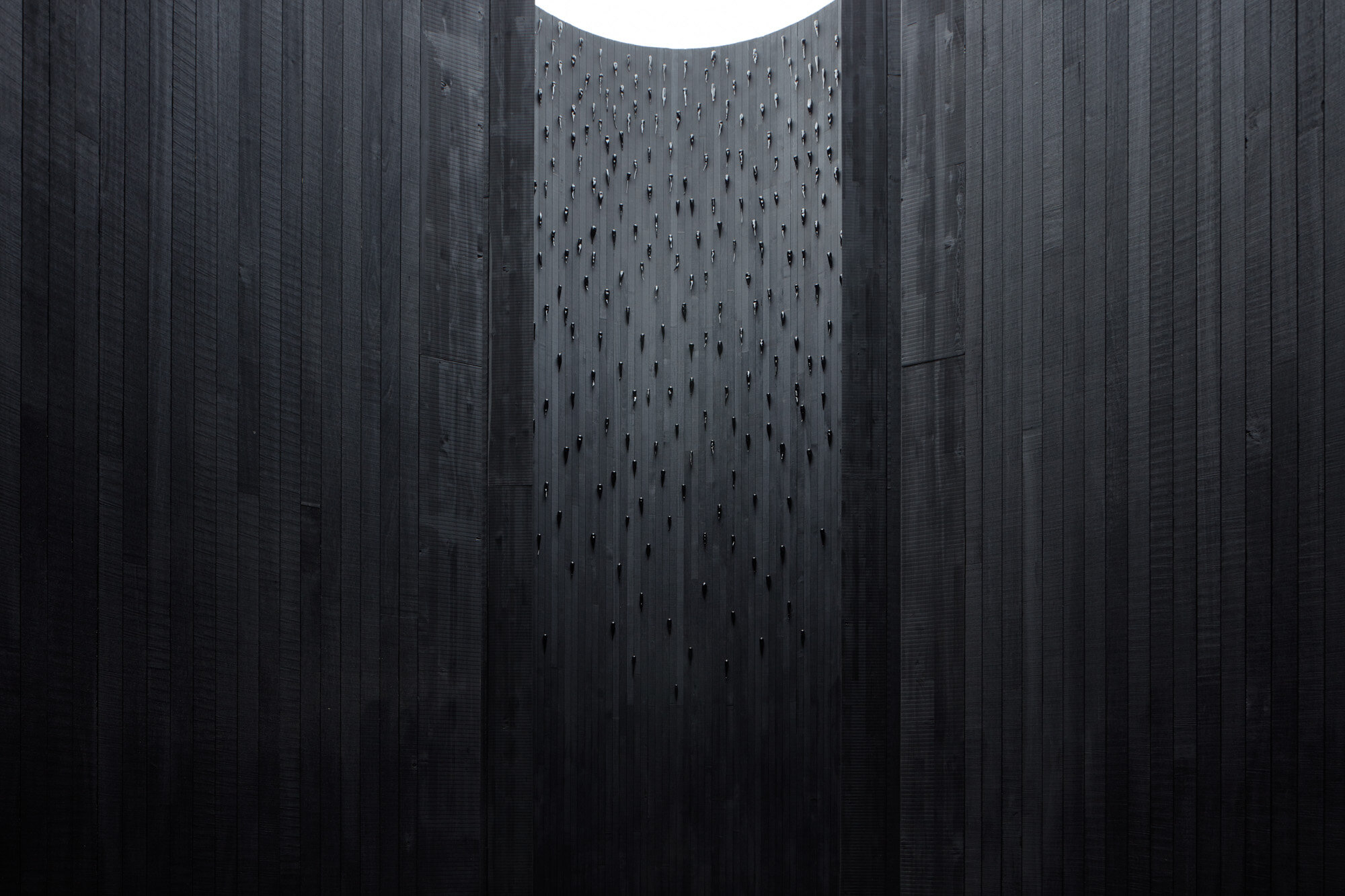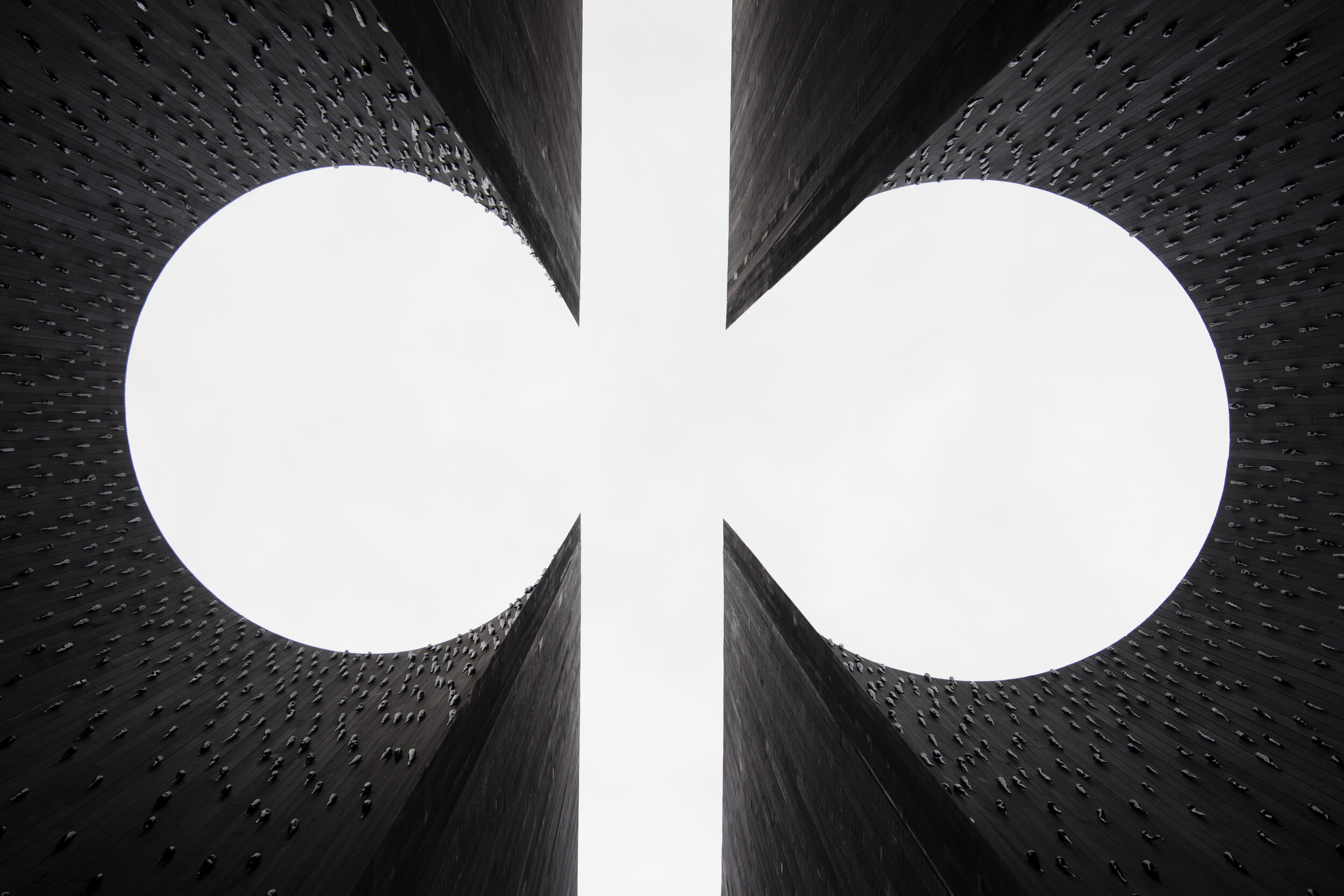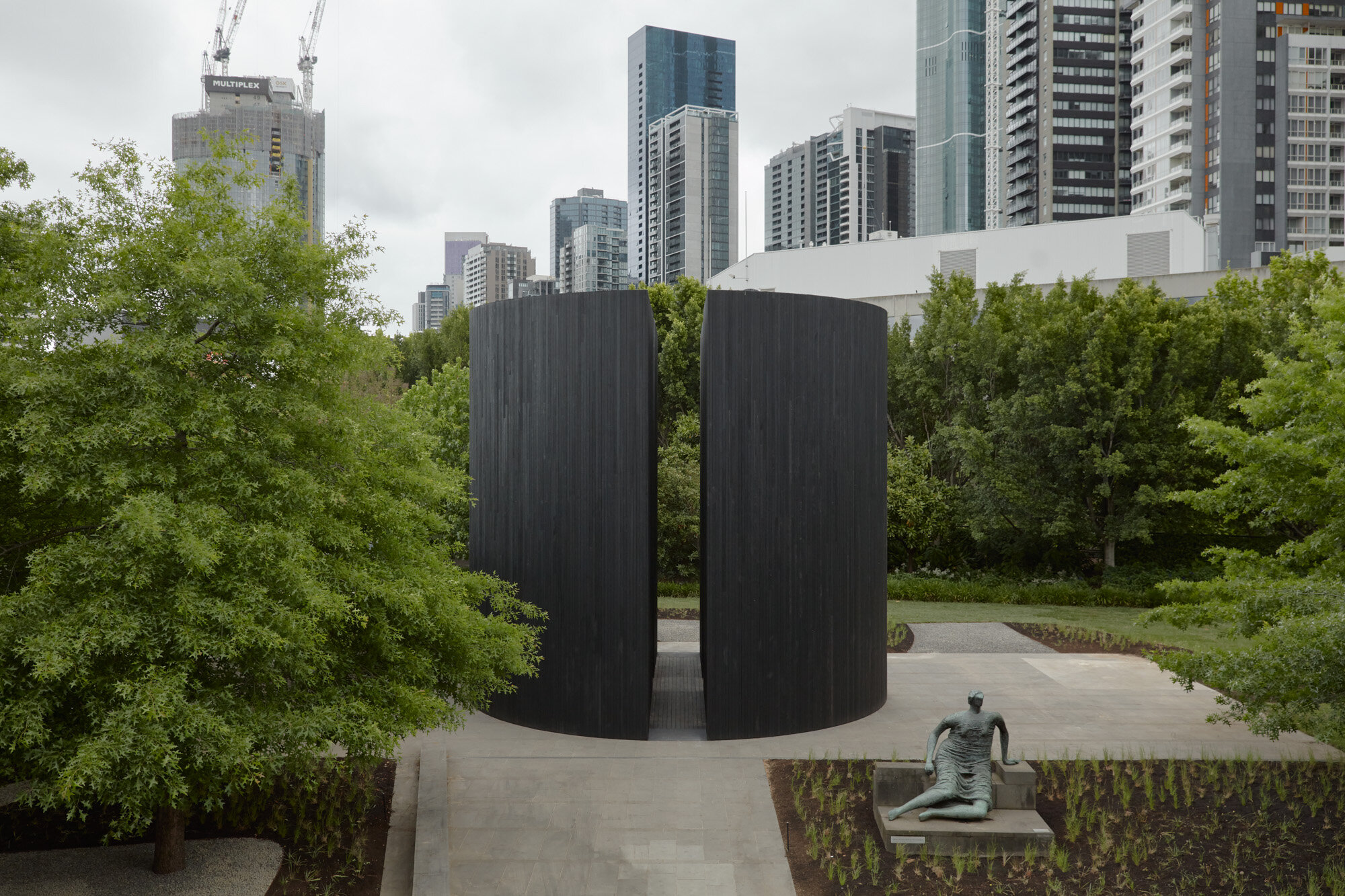Ewan McEoin
Design Curator
Senior curator at Melbourne’s NGV, Ewan McEoin. Photo: Eugene Hyland
Interview by Janne Ryan | Photography by Eugene Hyland, Lisa Murray, Sean Fennessy, Tom Ross, Ben Hosking, Earl Carter
Ewan McEoin is driven by constant momentum. Trained as an environmental scientist, this top-tier Melbourne-based curator wants us all to participate in making our dynamic but vulnerable new world. A good idea, he says, can come from anywhere and anyone. Facilitation is key.
WHAT DO YOU DO?
I am the senior curator of contemporary art, design and architecture at the National Gallery of Victoria (NGV).
HOW DID YOU BECOME THIS?
I trained as an environmental scientist, then worked in publishing, then became a curator. So the way my brain works, and coming out of environmental science, I understand that all systems – ecological or economic – are interconnected. I saw design as the field that had the most potential of bringing these things together. Both my parents are designers, so I understood quite a lot about design from growing up in a house with an architecture academic and a designer.
Installation view of BTVV’s work Walls 4 Sale: near new and supersized 2020 on display in NGV Triennial 2020 from 19 December 2020 – 18 April 2021 at NGV International, Melbourne © BTVV. Photo: Sean Fennessy
“a good idea can come from anywhere.”
Installation view of BTVV’s work Walls 4 Sale: near new and supersized 2020 on display in NGV Triennial 2020 from 19 December 2020 – 18 April 2021 at NGV International, Melbourne © BTVV. Photo: Sean Fennessy
what is a curator?
Curation is generally a fairly reflective act where you look at what’s in the collection, for example, at the NGV, or you look at what’s happening within an industry like the art world or the design world. The curator is recording and interpreting that. But I like to work in what I call the generative space, where you’re actually working in close collaboration with artists and designers and architects to create opportunities to push practice forward into new terrain. Increasingly the NGV works in the commissioning space, with me, the curator, creating the future as much as looking at where we are today and where we’ve been. The challenges ahead – from climate change and other ecological problems, to social issues – are all pressing enough that everybody needs to be participating in the solution, rather than observing and dissecting what has been done by others.
Installation view of Carnovsky’s work Extinctions 2020 on display in NGV Triennial 2020 from 19 December 2020 – 18 April 2021 at NGV International, Melbourne © Carnovsky. Photo: Tom Ross
PARTICIPATION IS THE CURATOR’S NEW ROLE?
Oh, very much. We’re trying to lead, we’re trying to shape the conversation. We’re facilitating a lot of opportunities. I’m impatient. I’m very much engaged with the sector. I’m fairly clear about the fact that you can’t just look at it.
HOW IS THE DESIGN INDUSTRY CHANGING?
If we think about the past hundred years of evolution in design and architecture, they’ve both been on similar trajectories. Both are attempting to design better environments and systems and objects for people to use. They are responding to human needs such as the consequences of industrialisation, climate change, and globalisation. And, increasingly, they are trying to respond to ecological needs and the needs of other species.
Installation view of Fallen Fruit’s work Natural History 2020 on display in NGV Triennial 2020 from 19 December 2020 – 18 April 2021 at NGV International, Melbourne © Fallen Fruit. Photo: Sean Fennessy
YOUR STRENGTHS & WEAKNESSES?
I like looking across what could be seen as very diverse things and finding ways of bringing them together. I’m a good facilitator. My strengths could also be my weaknesses. I have a tendency to want everyone to be happy, and this could be seen as a weakness. I enjoy consensus around decisions, so I have a tendency to avoid conflict.
what drives you?
Curiosity. Optimism. Creativity.
“All systems — ecological or economic — are interconnected.”
Installation view of Fallen Fruit’s work Natural History 2020 on display in NGV Triennial 2020 from 19 December 2020 – 18 April 2021 at NGV International, Melbourne © Fallen Fruit. Photo: Sean Fennessy
GAME CHANGER MOMENTS?
I have three pivotal moments. After leaving university (Newcastle University, NSW) I went travelling around Ireland (my birthplace) and got a job at a magazine – Irish Architecture. I realised I really enjoyed magazines and the idea of facilitating opportunities for other people. Editing a magazine, you’re essentially curating. The next pivotal moment was spending a week in the late 1990s with Canadian designer Bruce Mau. I’d become disillusioned with the magazine* because it was just reviewing interiors and architecture, and there was no sense of ethical framework. I was thinking of leaving but Bruce encouraged me to use the platform I had and we came out with a special issue in 2000, setting a new benchmark around creative thinking, new technologies, ethics and sustainability. And the really big game-changer was leaving the magazine in 2000, setting up my own small studio to run Melbourne Design Week – which was then the Australia Pacific Design Triennial. That was an amazing moment, which eventually led me to a conversation with Tony Ellwood (NGV Director), who invited me to work with his team in Melbourne.
*Returning to Australia, Ewan edited Australia Design Review and Inside Interior Review, which then became Inside, a magazine for creative thinkers.
Installation view of JR’s work Homily to Country 2020 on display in NGV Triennial 2020 from 19 December 2020 – 18 April 2021 at NGV International, Melbourne © JR. Photo: Earl Carter
“With lots of personalities involved, you’ve got to be able to find the way forward.”
Aerial view of JR’s work Homily to Country 2020 during a live procession in Menindee Lakes, New South Wales, Australia on Saturday 27 February 2021. Photo: NGV
Aerial view of JR’s work Homily to Country 2020 during a live procession in Menindee Lakes, New South Wales, Australia on Saturday 27 February 2021. Photo: NGV
GOALS — HOW USEFUL ARE THEY?
Excellence is important. It underpins everything. On balance I feel we have the potential to be entering into one of the most exciting periods of human civilisation and culture. It’s just a matter of getting the right people on board.
HOW DO YOU STAY FOCUSED?
I move very fast because I trust my instincts. Ideas come fast. Part of being able to succeed in a dynamic environment like the NGV is being able to have lots of ideas and not get fixated on one over the other. With lots of personalities involved you’ve got to be able to find the way forward.





[This pic and gallery above] Installation view of In Absence, 2019 designed by Yhonnie Scarce and Edition Office for the 2019 Architecture Commission at NGV International, Melbourne from 23 November 2019 – April 2020. Photos: Ben Hosking & Tom Ross
WHAT IS NGV CONTEMPORARY?
This is a major initiative by the Victorian Government, a new gallery building for contemporary art, design and architecture. We’re in the process of running an architecture competition for the building design. Our challenge, and a career goal for me, is to make the most amazing things possible. Why be limited by what we have already done in Australia? Why not lead globally? The NGV is in a position to take that leadership, and that’s very exciting.
“You have to keep moving and stay positive, and move quickly through knock-backs.”
WHAT IS SUCCESS FOR YOU?
Constant momentum. I’ve learnt over the years that things are unpredictable. You never know where things will lead. You just have to keep moving and stay positive, and move quickly through rejection and knock-backs. Creating a work environment with the capacity to take on negative feedback, or to not get a project through. There will always be other options. A good idea can come from anywhere.
WHAT KEEPS YOU AWAKE AT NIGHT?
Whether or not design can deliver on its promise. I’m a realist, so we could be at the dawn of one of the worst, most complicated, chaotic periods of human history… or the opposite.
“Personal challenges make you empathetic.”
YOUR HARDEST LESSON?
On a personal level I’ve had quite a few situations where people I love have been very ill. My daughter had lymphoma when she was two, and my wife had stage four breast cancer and went through a gruelling treatment over the years.Those personal challenges make you empathetic and you realise that anything you could possibly go through at work is just sort of irrelevant. I could never see a difficult situation at work as being insurmountable. Work is work. It’s not life or death.
Ewan and co. unplugged. Photo: Lisa Murray
WHERE TO FROM HERE?
For me it’s personal, learning that a great life doesn’t need to be complicated and finding that joy in the journey. I like mentorship. You learn through spending time with fascinating people, that’s one of the great privileges of my working life and has been all the way through. I would like to connect more like-minded people – at a meta level – I have a great network of colleagues around the world.










![[This pic and gallery above] Installation view of In Absence, 2019 designed by Yhonnie Scarce and Edition Office for the 2019 Architecture Commission at NGV International, Melbourne from 23 November 2019 – April 2020. Photos: Ben Hosking & Tom Ross](https://images.squarespace-cdn.com/content/v1/5c0f1e5ec3c16ac8963a0195/1626586473963-FKVRS1L9LZWIIX41ISQW/EO_NGV_0011.jpg)










